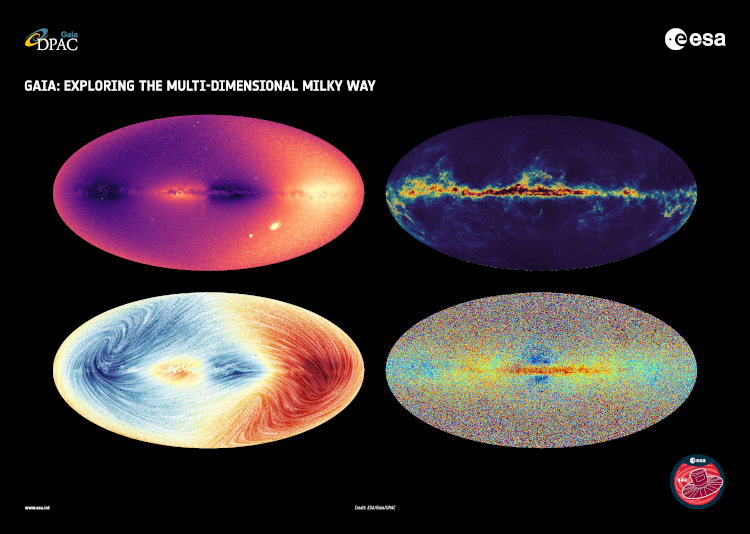Catalan researchers contribute to European Space Agency's 'richest star map'
Data now available to investigators worldwide to study and find new space discoveries

The European Space Agency (ESA) published its richest star map to date on Monday using a wealth of astrophysics data. In total, they have new and improved details for almost two billion stars in our galaxy, which represent 1% of the Milky Way.
The ESA has been collecting all this information thanks to the Gaia satellite. Catalan researchers have been part of this project, as investigators from the Institute of Cosmos Sciences of the University of Barcelona (ICCUB) and members of the Catalan Institute of Space Studies (IEEC) joined in the data collection.
The data is now publicly available for other researchers around the globe to study and find new discoveries.
"One of the proofs of the importance of the star map is the worldwide expectation. There were a lot of people waiting to download the data and start working with it," Carme Jordi, ICCUB researcher, told media outlets during a press conference.
"Now is when we will see the important discoveries," she added.
The reality is that preliminary analysis of this data reveals "fine details about the make-up of the Milky Way’s stellar population and about how stars move, essential information for investigating the formation and evolution of our Galaxy," the ESA website reads.
“The observations collected by Gaia are redefining the foundations of astronomy,” says Günther Hasinger, ESA Director of Science.
Also new in this data set is the largest catalog yet of binary stars, thousands of Solar System objects such as asteroids and moons of planets, and millions of galaxies and quasars outside the Milky Way.
"We publish the data, so all scientists around the world can take their favorite galactic object and study it in depth," José Manuel Carrasco, astrophysics researcher at the University of Barcelona, said at the press conference.
"When we published the second catalog, we found out that thanks to the data, a few weeks later we discovered the nano-galaxy that the Milky Way had swallowed. We did not expect this, but it became an important event," Mercè Romero, astrophysics professor and researcher at the ICCUB, explained.
Gaia was launched in December 2013 and started science operations the following year. The first data release, based on just over one year of observations, was published in 2016; it contained distances and motions of two million stars.
The new data release, which covers the period between 25 July 2014 and 23 May 2016, pins down the positions of nearly 1.7 billion stars, and with a much greater precision. For some of the brightest stars in the survey, the level of precision equates to Earth-bound observers being able to spot a Euro coin lying on the surface of the Moon.
"With these accurate measurements it is possible to separate the parallax of stars – an apparent shift on the sky caused by Earth’s yearly orbit around the Sun – from their true movements through the Galaxy," the ESA explains.
The comprehensive dataset provides a wide range of topics for the astronomy community.
As well as positions, the data include brightness information of all surveyed stars and color measurements of nearly all, plus information on how the brightness and color of half a million variable stars change over time. It also contains the velocities along the line of sight of a subset of seven million stars, the surface temperatures of about a hundred million, and the effect of interstellar dust on 87 million.
One of the most surprising discoveries coming out of the new data is that Gaia is able to detect starquakes – tiny motions on the surface of a star – that change the shapes of stars, something the observatory was not originally built for.
Gaia also observes objects in the Solar System: the second data release comprises the positions of more than 14,000 known asteroids, which allows precise determination of their orbits. A much larger asteroid sample will be compiled in Gaia’s future releases.
What stars are made of can tell about their birthplace and their journey afterward, and therefore about the history of the Milky Way. With the data released, Gaia is revealing the largest chemical map of the galaxy coupled to 3D motions, from the solar neighborhood to smaller galaxies surrounding ours.
"All this data gives us clues about whether a smaller galaxy was swallowed by ours. How was the Sun formed? And the other stars? Where do stars come from?" Carrasco wondered.